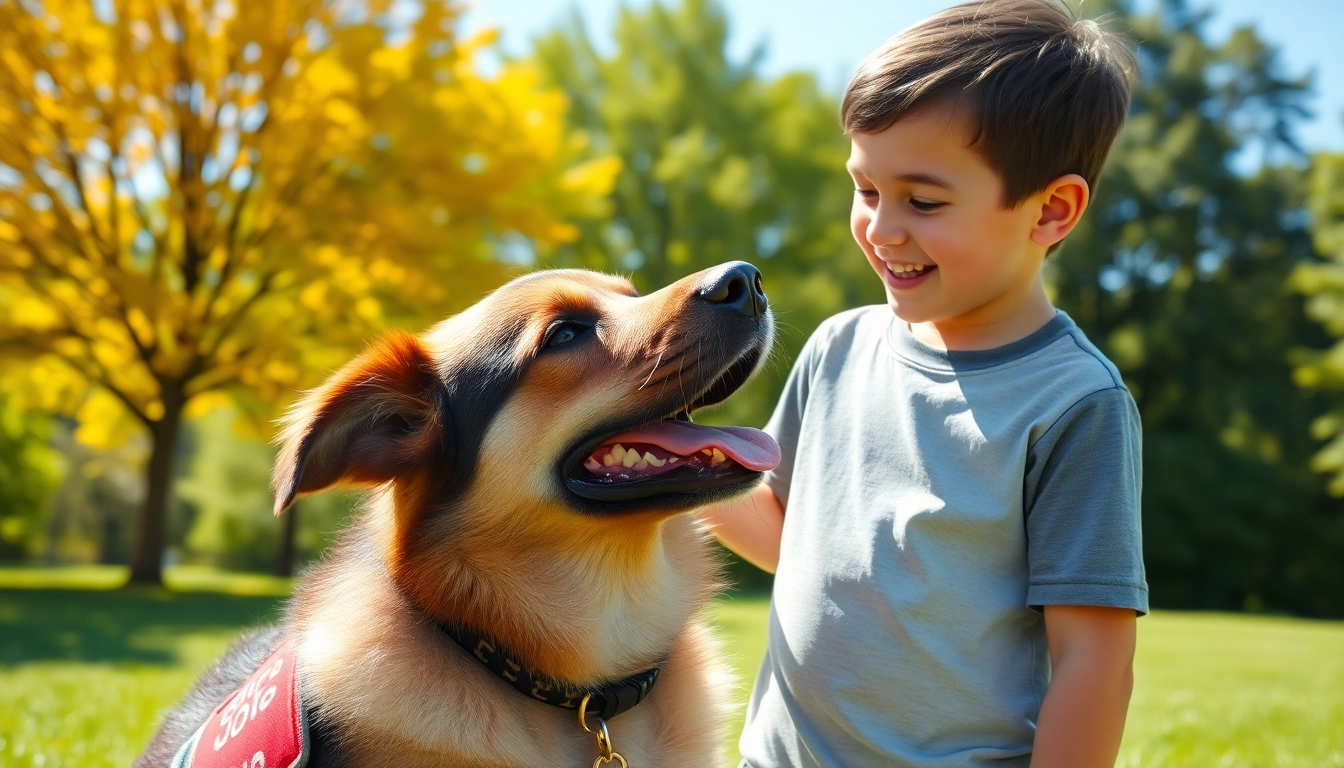Understanding Autism and the Role of Service Dogs
What is Autism?
Autism Spectrum Disorder (ASD) is a complex developmental condition that affects communication, social interaction, and behavior. The term “spectrum” reflects the wide range of symptoms and severity that individuals with autism may experience. While some may develop language skills and lead relatively independent lives, others may require significant assistance throughout their lives. According to the CDC, approximately 1 in 54 children is diagnosed with autism, highlighting the importance of understanding this condition and its impact on families.
The Benefits of Autism Service Dogs
Autism service dogs can play a pivotal role in the lives of individuals with autism and their families. These specially trained dogs offer emotional support, promote safety, and facilitate social interactions. Among the numerous benefits they provide, key advantages include:
- Emotional Support: The companionship of a service dog can help reduce anxiety and stress for children with autism.
- Increased Safety: Service dogs are trained to prevent children from wandering off, a common concern among caregivers.
- Social Interaction: The presence of a service dog can act as a social catalyst, making it easier for children to interact with peers.
- Independence: Dogs can assist with daily tasks, allowing children more opportunities for independence.
- Routine and Structure: Caring for a dog instills a sense of routine and responsibility in children.
Types of Autism Service Dogs Available
Different types of service dogs are trained to assist individuals with autism, each serving unique needs. Common types include:
- Guide Dogs: These help with mobility and navigation.
- Emotional Support Dogs: They provide comfort and reduce anxiety.
- Social Interaction Dogs: Trained to encourage socialization and interaction with others.
- Medical Alert Dogs: Detect and alert to medical conditions that may accompany autism, like seizures.
Choosing the Right Autism Service Dog
Identifying Your Family’s Needs
Choosing the right autism service dog is a decision that requires careful assessment of your family’s specific needs. This includes considering the child’s age, temperament, and specific challenges faced due to autism. Are they prone to anxiety? Do they struggle with sensory overload? Having clarity on what you hope to achieve with a service dog can guide your decision-making process effectively.
Key Traits to Look for in a Service Dog
Not all dogs are suitable as service dogs. It’s essential to look for certain traits when selecting a puppy or dog for autism assistance:
- Temperament: A calm and patient demeanor is crucial. The dog must be able to work under stress and handle unexpected situations.
- Trainability: Some breeds are more easily trainable than others. Look for intelligent and eager-to-please breeds.
- Size: Depending on the child’s size and the environment, the size of the dog may be a consideration for suitability.
- Social Compatibility: The dog should be good-natured not only with the child but with other people and pets as well.
Evaluating Training Programs for Autism Service Dogs
When selecting a service dog, evaluating training programs is crucial. Look for organizations that are accredited and have a clear training process. Key considerations include:
- Accreditation: Confirm that the organization is accredited by a recognized body such as Assistance Dogs International (ADI).
- Positive Reinforcement: Ensure that the program employs positive reinforcement training techniques rather than aversive methods.
- Follow-Up Support: A good program will offer ongoing support after placement and provide resources for continued training.
The Adoption Process for Autism Service Dogs
Application Steps for Autism Service Dogs
The application process for obtaining an autism service dog varies by organization but generally involves several key steps:
- Initial Inquiry: Contact the organization to express your interest and gather initial information.
- Application Submission: Fill out detailed applications assessing your family’s needs, lifestyle, and home environment.
- Interview Process: Engage in an interview or home visit conducted by the program to evaluate compatibility.
- Waitlist: If selected, you may be placed on a waitlist for a suitable dog.
- Placement and Training: Once matched, the dog will undergo a personalized training process with your family.
Understanding the Costs Involved
The costs of acquiring an autism service dog can be extensive. Training, certification, and vetting of the dog can range from $15,000 to $30,000 or more. This includes initial training, ongoing support, and care. Understanding these costs upfront will help in budgeting and expectations.
Financing Options for Adoption
If the costs are prohibitive, there are various financing options available to assist families. Organizations often offer scholarships or payment plans. Additionally, consider researching grants and local charities that may provide financial support to offset the expenses associated with obtaining an autism service dog.
Training and Integration of Autism Service Dogs
Basic Training for Autism Service Dogs
Once you have your service dog, the initial training phase will be critical. Here are the key focuses of basic training:
- Obedience Commands: Training the dog to respond to basic commands is essential for safety and effective assistance.
- Public Access Training: This ensures that the dog can behave appropriately in various environments, which will be important as your family navigates public spaces.
- Specific Tasks: Training may also include tasks tailored for autism support, such as blocking behaviors that could be harmful or alerting to sensory overload.
How to Integrate a Service Dog into Your Home
Integrating a service dog into your home involves preparing both the dog and the family. Important steps include:
- Establishing Routines: Create consistent routines that involve the dog, which helps both the child and the dog feel secure.
- Supervised Introductions: Introduce the dog to family members and other pets gradually, ensuring all interactions are calm and positive.
- Monitoring Behavior: Pay attention to how your child interacts with the dog, and guide them to help foster a healthy relationship.
Ongoing Support and Training for Families
Continuous training and support are vital for the success of an autism service dog team. This includes regular refresher training sessions, consultations with trainers, and attending workshops. Support groups or community resources can also be invaluable as families can share experiences and advice.
Personal Experiences with Autism Service Dogs
Success Stories from Families
Many families report profound changes in their quality of life after obtaining an autism service dog. Common themes from success stories include improvements in the child’s emotional stability, enhanced social skills, and reduced anxiety levels. Families often share how their service dog provided them with a sense of security and companionship that was previously lacking.
Challenges and Solutions in Service Dog Ownership
While service dogs can offer numerous benefits, some challenges may arise, including adjusting to life with a service dog, managing the dog’s health care needs, and addressing public perception. Solutions could include ongoing training, utilizing resources from dog services, and engaging with communities of other service dog families for support and strategies.
Community Resources and Support Networks
Community resources can be tremendously helpful for families. Local support groups, educational workshops, and online forums provide a platform for sharing experiences and gaining insights into the use of service dogs as well as additional autism resources. Networking with other families can lead to lasting friendships and shared experiences that enrich the journey of service dog ownership.



